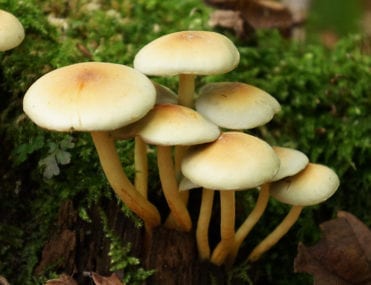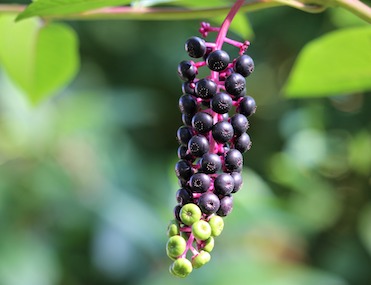As the weather grows cooler, a lot of us will soon be outside enjoying the crisp fall air. I was hiking over the weekend with my family and couldn’t help but notice the lush greenery along the trails. But what struck me more were the bright red berries and white mushrooms scattered throughout the greenery. While the scenery is beautiful to look at, it’s also important to know what to avoid.
As a nurse and certified specialist in the Drug and Poison Information Center, I have a unique perspective about poisonous plants to keep my family safe out on the trail. I’d like to share this knowledge so you can steer clear of the biggest risks in the great outdoors. Here are some tips for avoiding an exposure to common poisonous wildlife you’re likely to encounter in the Midwest:
MUSHROOMS

Ohio’s Poison Centers receive hundreds of calls each year regarding mushroom exposures. Often it is related to a child who picks up a mushroom or piece of a mushroom and puts it in their mouth. Usually these are mushrooms that have sprouted up in the backyard and are often referred to as field mushrooms. Often these mushrooms are associated with stomach upset and can cause nausea, vomiting and diarrhea.
Poison Centers are also getting an increased number of calls regarding patients who have foraged for mushrooms. There are many toxic mushrooms that grow in the wild, particularly in wooded areas. Toxic mushrooms can look very similar to nontoxic mushrooms and as a result, it is very difficult to differentiate the different types of mushrooms, even for people who feel they are experienced mushroom foragers. Only an experienced mycologist could effectively differentiate between a toxic and nontoxic mushroom. This time of year, we often receive cases of patients who’ve foraged for mushrooms and eaten them and have become very ill. Some mushrooms can cause liver failure, kidney failure, and other serious medical conditions as well as death. Because it is almost impossible to differentiate a nontoxic mushroom from a toxic mushroom, you should never eat wild mushrooms.
BERRIES

Backyards, walking trails and fields are often covered with berry-producing plants. Some often look alike and it is often hard to determine which berries are edible and which are not. Many non-edible berries can cause stomach upset including nausea, vomiting and diarrhea when eaten. Other berries can cause more serious problems including heart problems. It is recommended to avoid eating any wild berries.
If you suspect someone has eaten a harmful plant, berry or mushroom, contact your local Poison Control Center at 1-800-222-1222.






Hello, as a DPIC nurse, I understand your reasoning behind the statement “you should never eat wild mushrooms”, but some mushrooms, e.g. chanterelles, are pretty easy to differentiate from their harmful cousins. I’ve begun teaching my kids that they should never ingest anything without showing me or mommy first, while at the same time time showing them that there are a lot of yummy treats out in nature!